Dynatrace® AutomationEngine provides a low-code/no-code approach to workflow modeling with a highly extensible ecosystem for connecting additional systems and supporting complex business logic.
It’s Sunday morning, and you’re having breakfast with your family. A notification about new Common Vulnerability and Exposures (CVE) pops up on your mobile device. Is the situation critical? Do you need to react immediately? Will the right team, or at least someone accountable, take care of the vulnerability if you don’t?
This is the sort of thing that Operations horror stories are made of, where the hero needs to choose between rescuing the company and your end users or sacrificing sleep and—even worse—family time.
But this is not the case for you, thankfully. You took advantage of the launch of AutomationEngine, configured ownership information for all the monitored entities in your IT landscape, and set up workflows that automatically create tickets and route them to the responsible teams when security vulnerabilities are detected. And in case of emergencies, such as this situation, incidents are also escalated to you.
Sense, think, and then act
Let’s briefly recap. AutomationEngine leverages Dynatrace observability, security monitoring, and Davis® causal AI to deliver answers from data at an enormous scale. AutomationEngine can precisely react to threats within hybrid and multicloud ecosystems, whether this involves blocking a malicious attacker, scaling an EBS volume, or restarting a service.
AutomationEngine provides a low-code/no-code approach to model workflows for targeted notification and collaboration, closed-loop remediation, quality/security gating, and more. And while the ecosystem is continuously growing, there will be situations where you need to connect a bespoke system, implement an edge case that is yet to be made available, or you want to cover complex customer business logic to address your requirements. The good news is that Dynatrace has you covered with a highly extensible ecosystem.

In line 1 of the workflow shown above, ownership information and contact details are retrieved from affected entities to enrich the problem/vulnerability with additional metadata. Via a custom script, the workflow then matches the data with Snyk to enrich the workflow with additional security aspects and Slack notifications for critical vulnerabilities. Line 3 checks if a Jira ticket exists for the vulnerability. If so, the information is added to the ticket as a comment. Otherwise, a new ticket is created and routed to the responsible team. Finally, in the last line, an HTTP request is sent to an API to reconfigure your bespoke ordering system and temporarily deactivate a certain feature.
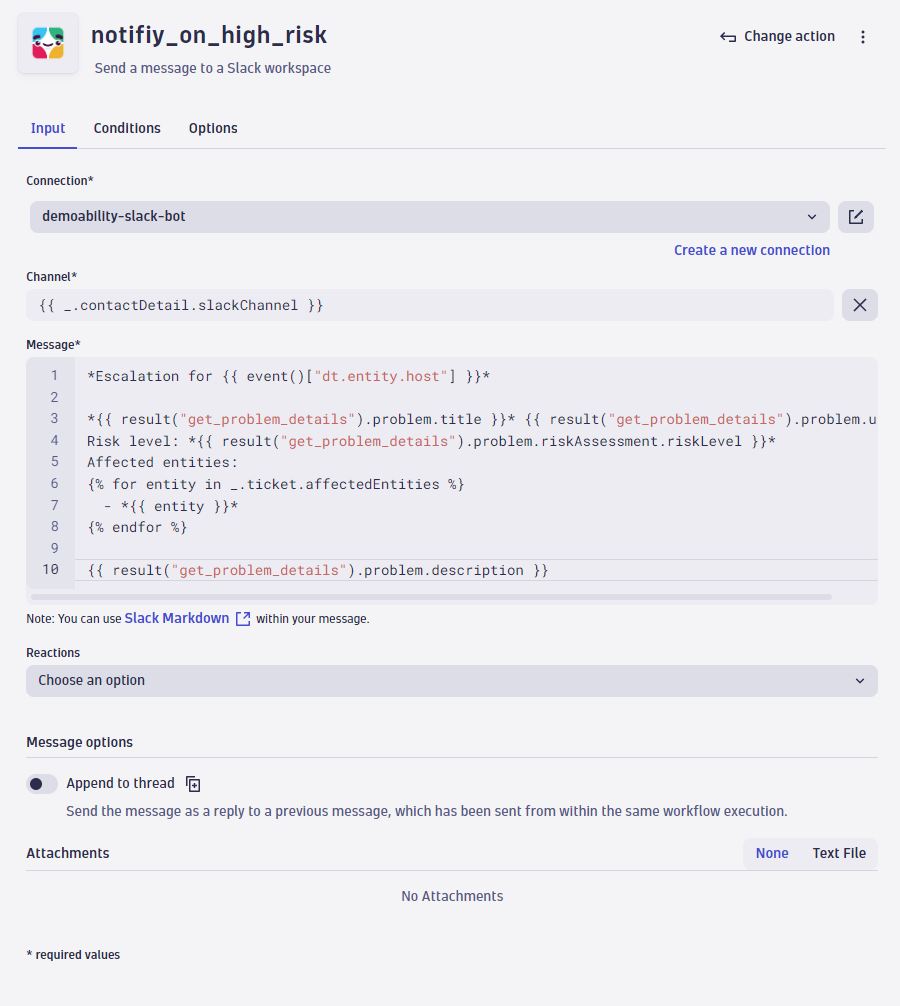
Slack channels can be dynamically defined by ownership information attached to a monitored entity. With Slack for workflows, you can send messages to multiple channels, post updates in threads, format messages, attach log files, and mark a thread with reactions, for example when a remediation task was successful.
Closed-loop functionality
Rather than a fire-and-forget functionality, Dynatrace Workflows provides closed-loop functionality that allows you to manage the lifecycle of an incident. With Jira transition status you can change the status or resolve a ticket, for example when a problem is closed. And since resolving issues often requires that additional fields be specified, you can add any mandatory fields to your workflow action.
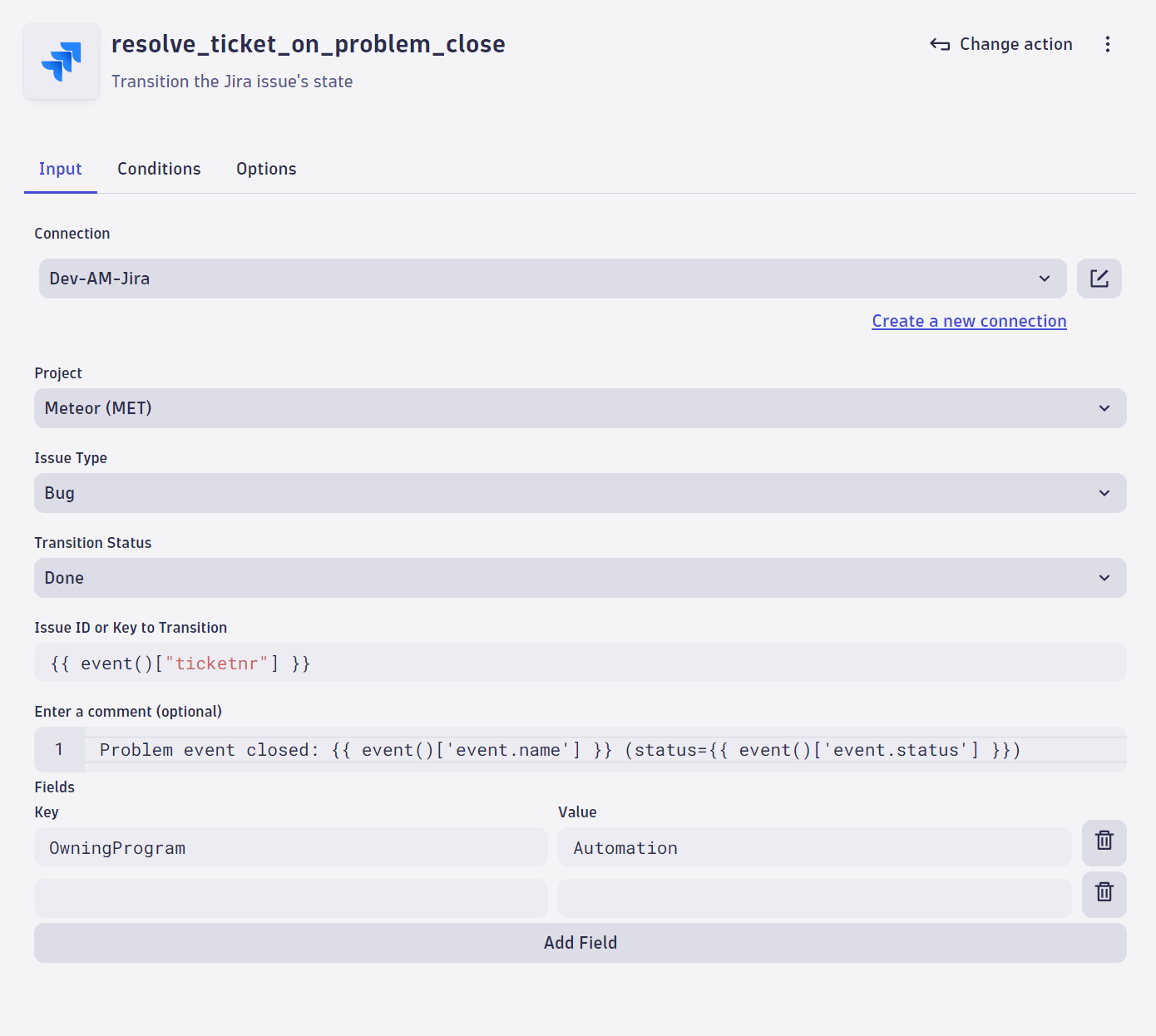
Dynatrace provides three types of custom extensions to the Workflows ecosystem:
- HTTP calls: Trigger HTTP(S) calls to your bespoke system.
- JavaScript: Import SDKs and run your script within a workflow action.
- Custom apps: Write your own app to include any custom business logic and reusable workflow action.
Examples of each of these custom extension types are detailed below.
HTTP(S) call
HTTP(S) calls are available as a workflow action and allow you to insert any arbitrary API call. And in connection with Dynatrace EdgeConnect, you can trigger commands within your on-premises environment.
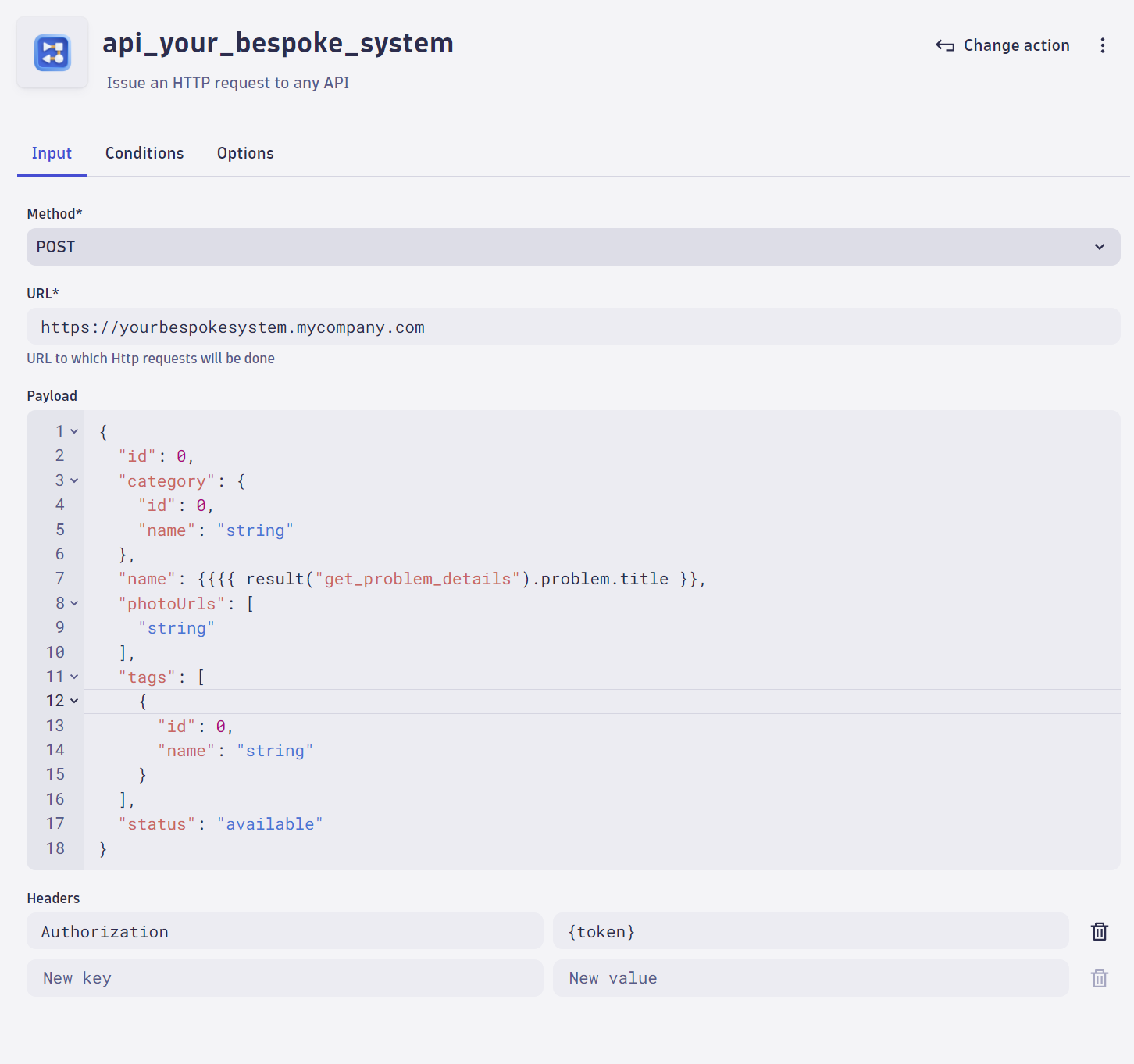
JavaScript
The JavaScript workflow action enables you to import SDKs and use your custom script within a workflow action. This powerful step provides boundless extension capabilities and allows you to code any business logic to access Dynatrace internal data or external systems.
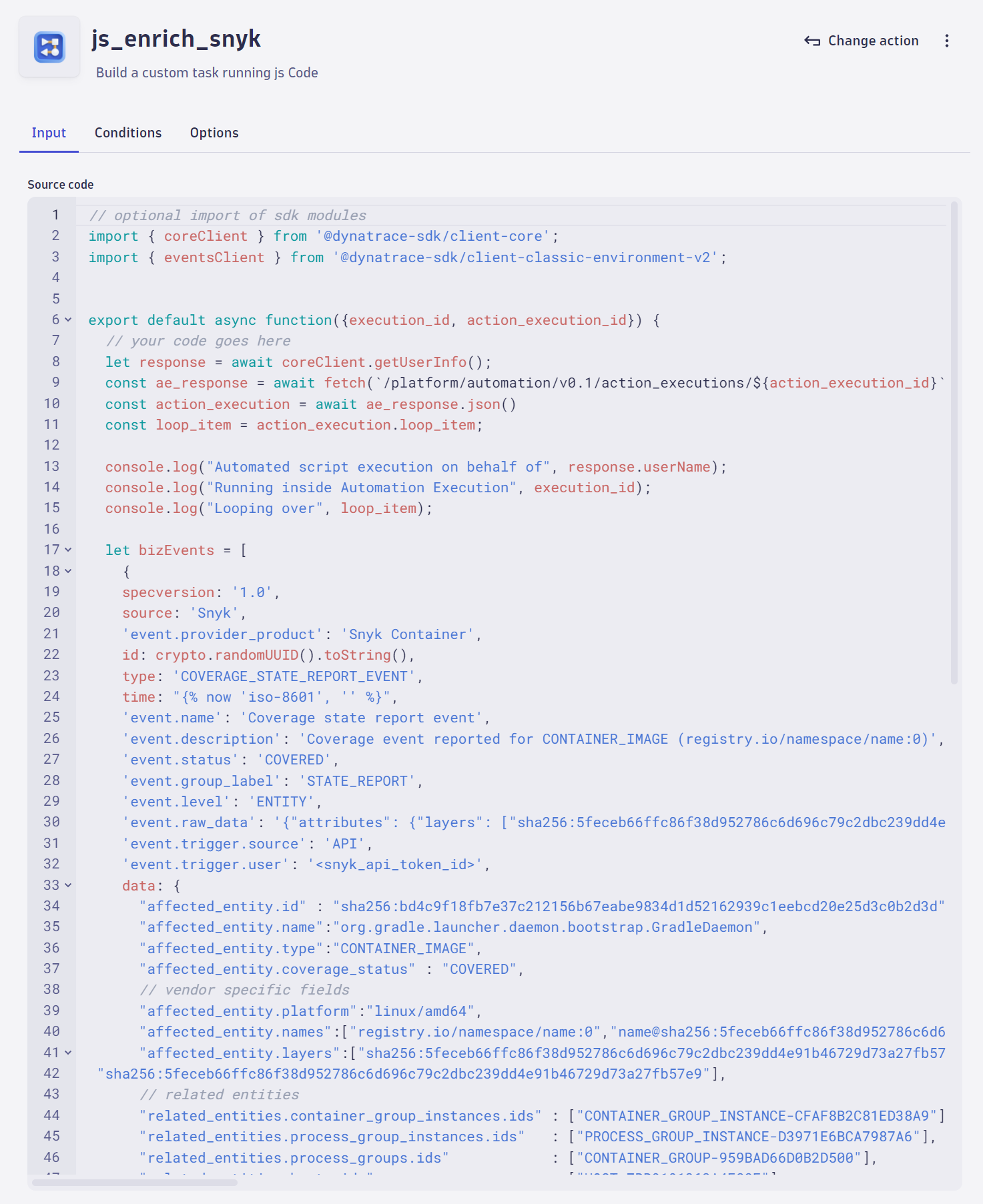
Dynatrace® Apps
Are you ready to level up? As soon as a desired business logic operates beyond one workflow step, Dynatrace provides you with a powerful platform to build your own app. Whether a beginner or a pro, Dynatrace Developer has the tools and support you need to create incredible apps with minimal effort, with an out-of-the-box design system, a beginner’s tutorial, sample apps for hands-on experience, and a strong community.
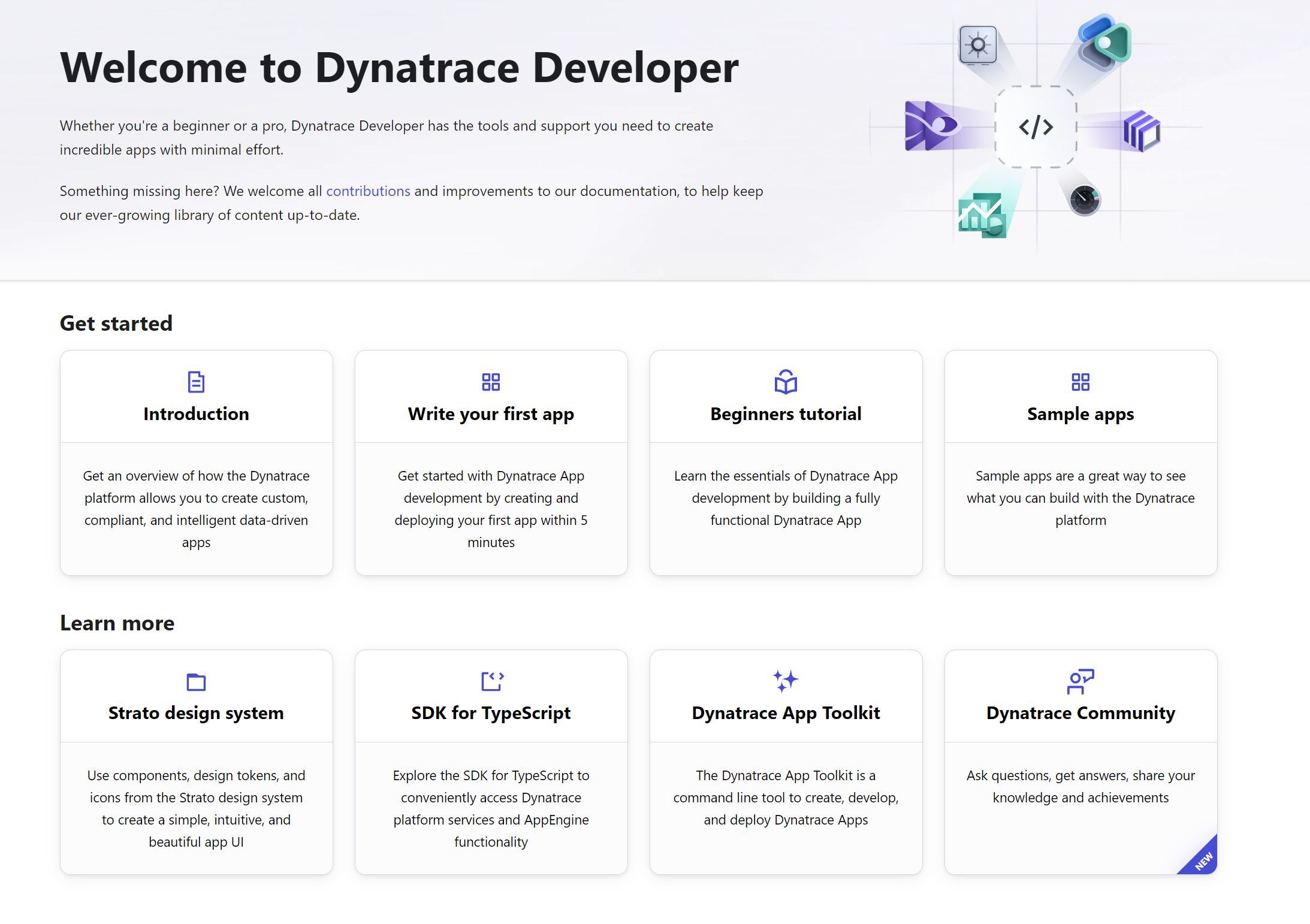
What’s next?
We are continuously enhancing the Dynatrace Workflow ecosystem, providing more feature-rich integrations into hyperscalers like AWS and workflow-template functionality with a broad repository across AIOps, DevOps, and Security, which will guide you through the first steps of AutomationEngine.
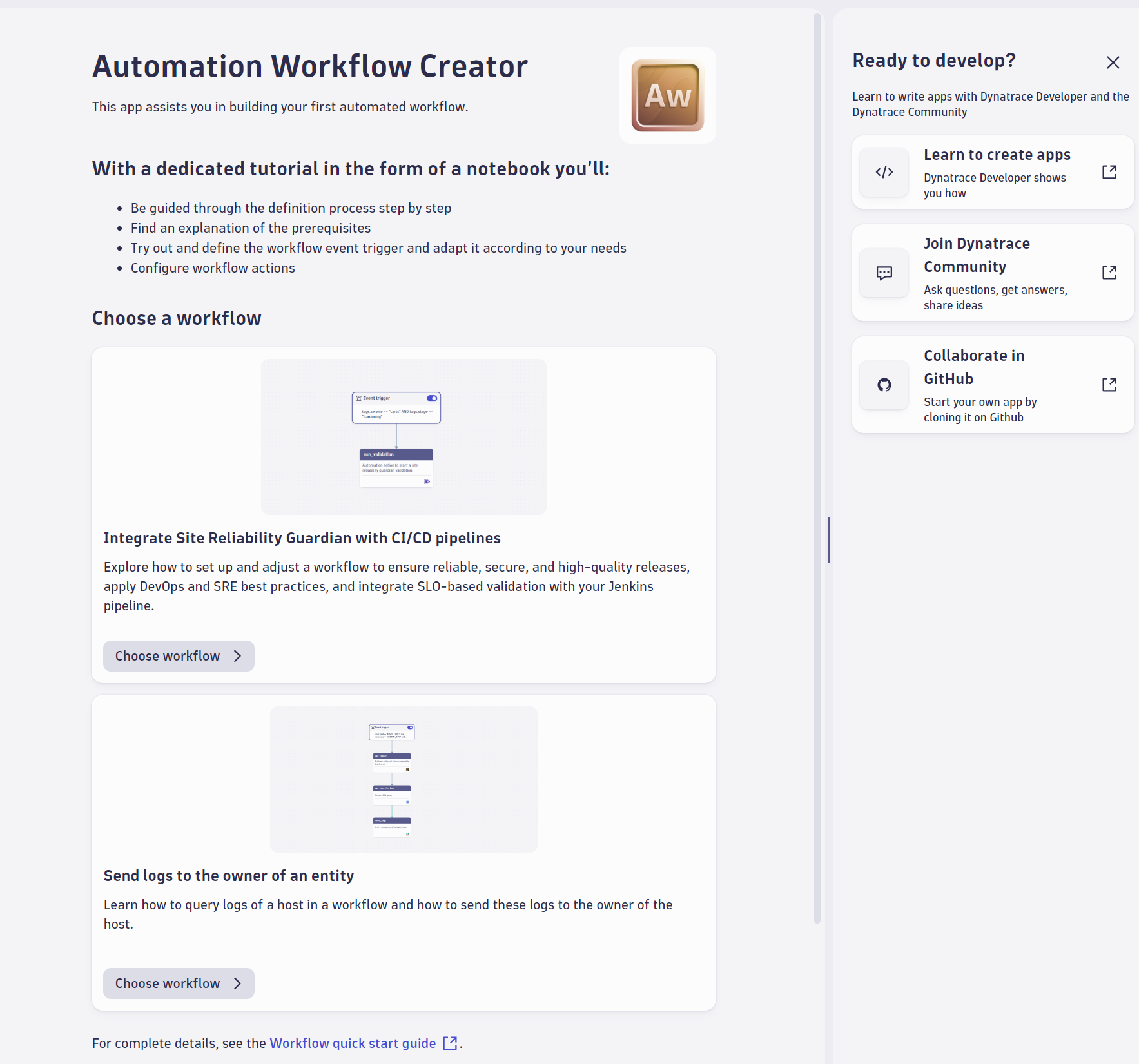
Conclusion
Try a Dynatrace free trial or request a demo to try out the new AutomationEngine. Check out the documentation and learn how to build apps. Go to the Dynatrace Launcher, invoke the search by pressing CTRL+K, and search for Workflow Automation Creator. This app will guide you interactively through the first steps of building an app. And If you’re looking for a certain third-party integration for automation that is currently missing, let us know by posting to the Dynatrace Community.





Looking for answers?
Start a new discussion or ask for help in our Q&A forum.
Go to forum